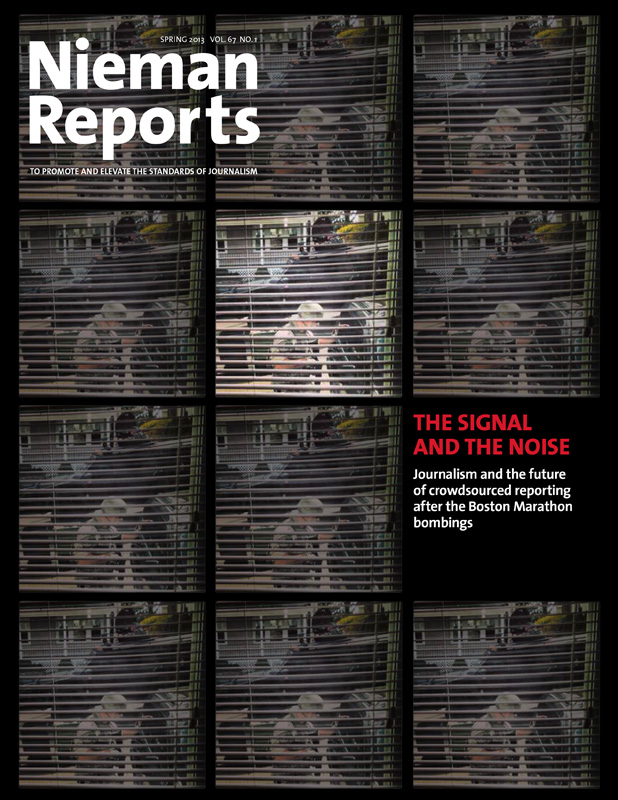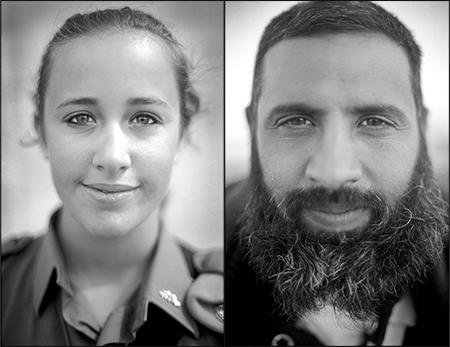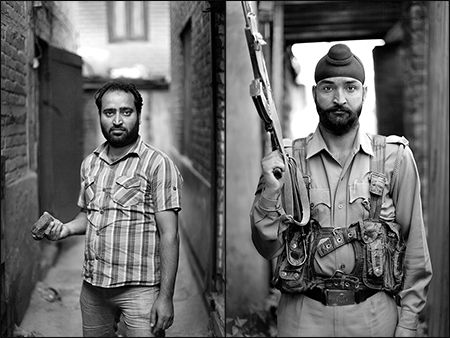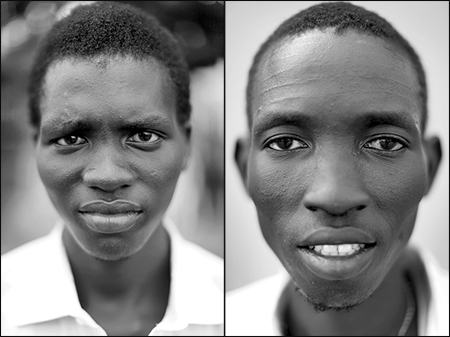
The Signal and the Noise
One tweeter boasted of a "game-changing victory" for crowdsourcing in the early hours of the Boston area manhunt. But what began as a low-grade fever on social media spiked with the wrongful naming of a bombing suspect. All the while, Nieman Visiting Fellow Hong Qu was testing his new tool Keepr as a screen for credibility and posting early results on Nieman Reports as the story unfolded. Qu and journalist Seth Mnookin, who tweeted live from the manhunt, write about how smartphones and their unprecedented power to publish require new journalistic tools and practices, while other Nieman Fellows consider the intersection of social media and journalism in the aftermath of the attac

Click the image to meet the fighters. Photos by Karim Ben Khelifa
Up until a few years ago, I had spent a decade and a half of my life behind the lens as a war photographer. I left home to document conflict and to try to enhance the way we see and understand the world. However, after many assignments in war zones for leading European and U.S. magazines and newspapers, I came to the conclusion that my work has not had the impact I had hoped for.
I believe the reason my work failed to have the impact I wanted is not the photographs themselves but the way in which they were disseminated to the public. In an image-saturated world, compassion fatigue in audiences is a challenge for conflict journalists. The only way we can cut through these layers of disengagement is to change the way in which we tell stories. We have to involve the audience, speak to their feelings and reason through a multitude of platforms, and open up discussion rather than provide answers.
For me, this has meant a radical new approach. For the past four years I have traveled to some of the world’s longest standing conflicts—including Israel/Palestine, India/Kashmir, and the feud between the Lou Nuer and Murle tribes in South Sudan—to photograph, film and interview the foot soldiers on both sides. My project “Portraits of the Enemies” allows me to explore the essence of these conflicts. (I also plan to visit Afghanistan, Burma, Democratic Republic of Congo, and El Salvador.)
Having witnessed many conflicts, I still grapple with one of the incomprehensible elements of war: What drives ordinary people to take up arms and harm another human being? Fighters in longstanding conflicts are predominantly not trained soldiers, but ordinary people who decided one day to act. How does an individual arrive at this point? How does the person navigate the moral dilemma of killing someone?

Click the image to meet the fighters. Photos by Karim Ben Khelifa
“Portraits of the Enemies” is conceived as an online and physical installation: Life-size portraits of the fighters will be juxtaposed, allowing the combatants to look each other in the eyes, to come face to face. Members of the audience will be placed at the cross section of those gazes. Confronted with images and video of the environment where fighting takes place; they will hear the sounds of war. The viewers can navigate the space between the fighters. By approaching one fighter, they hear that fighter’s voice.
I asked each fighter six simple questions and recorded the answers: Who are you? Who is your enemy? Have you ever killed your enemy? What is violence for you? What is peace to you? Where do you see yourself 20 years from now?
By allowing those who carry out the violence to explain who they are and what their motives and dreams are, the project challenges views held by all sides and ultimately humanizes the combatants. I provide no answers. Instead, I aim to provide an experience and stimulate a discussion beyond easy rhetoric.
As objectivity has proven to be virtually impossible in war coverage, I believe that by letting the fighters speak for themselves and by bringing enemies virtually face to face, the audience, caught in between, can experience the human dimension of war. My ultimate aim is to challenge the viewer to identify with both sides of a conflict and overturn conventional assumptions about a particular conflict.

Click the image to meet the fighters. Photos by Karim Ben Khelifa
Karim Ben Khelifa, a 2013 Nieman Fellow, will be an artist in residence at MIT’s Open Documentary Lab within the Media Lab beginning this fall.


